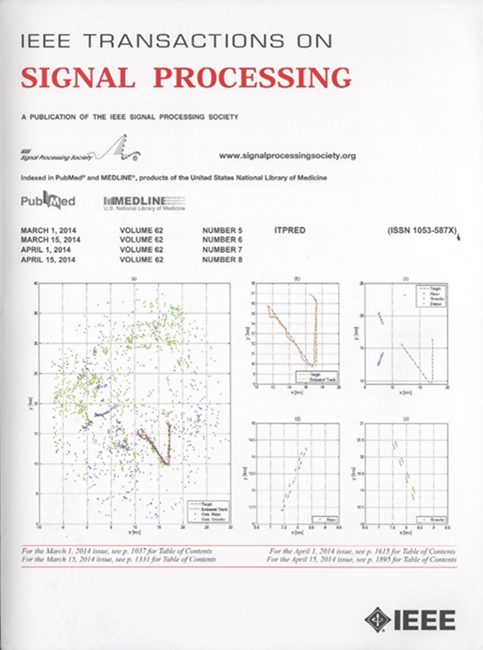Subspace Constrained Variational Bayesian Inference for Structured Compressive Sensing With a Dynamic Grid
IF 4.6
2区 工程技术
Q1 ENGINEERING, ELECTRICAL & ELECTRONIC
引用次数: 0
Abstract
We investigate the problem of recovering a structured sparse signal from a linear observation model with an uncertain dynamic grid in the sensing matrix. The state-of-the-art expectation maximization based compressed sensing (EM-CS) methods, such as turbo compressed sensing (Turbo-CS) and turbo variational Bayesian inference (Turbo-VBI), have a relatively slow convergence speed due to the double-loop iterations between the E-step and M-step. Moreover, each inner iteration in the E-step involves a high-dimensional matrix inverse in general, which is unacceptable for problems with large signal dimensions or real-time calculation requirements. Although there are some attempts to avoid the high-dimensional matrix inverse by majorization minimization, the convergence speed and accuracy are often sacrificed. To better address this problem, we propose an alternating estimation framework based on a novel subspace constrained VBI (SC-VBI) method, in which the high-dimensional matrix inverse is replaced by a low-dimensional subspace constrained matrix inverse (with the dimension equal to the sparsity level). We further prove the convergence of the SC-VBI to a stationary solution of the Kullback-Leibler divergence minimization problem. Simulations demonstrate that the proposed SC-VBI algorithm can achieve a much better tradeoff between complexity per iteration, convergence speed, and performance compared to the state-of-the-art algorithms.求助全文
约1分钟内获得全文
求助全文
来源期刊

IEEE Transactions on Signal Processing
工程技术-工程:电子与电气
CiteScore
11.20
自引率
9.30%
发文量
310
审稿时长
3.0 months
期刊介绍:
The IEEE Transactions on Signal Processing covers novel theory, algorithms, performance analyses and applications of techniques for the processing, understanding, learning, retrieval, mining, and extraction of information from signals. The term “signal” includes, among others, audio, video, speech, image, communication, geophysical, sonar, radar, medical and musical signals. Examples of topics of interest include, but are not limited to, information processing and the theory and application of filtering, coding, transmitting, estimating, detecting, analyzing, recognizing, synthesizing, recording, and reproducing signals.
 求助内容:
求助内容: 应助结果提醒方式:
应助结果提醒方式:


